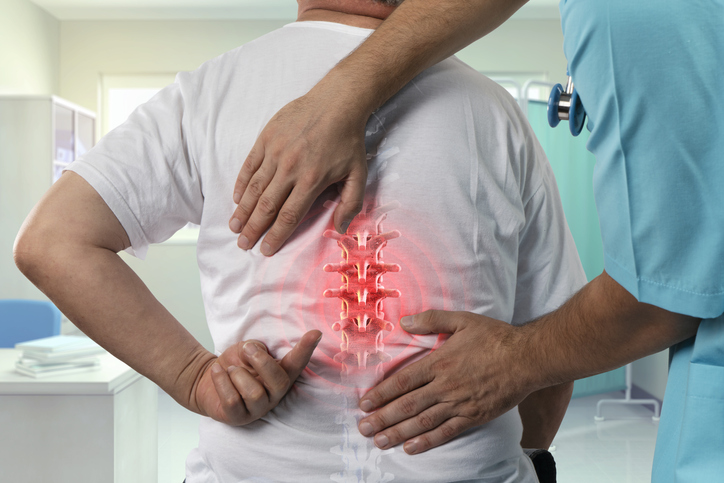
Spinal Decompression Gains Traction
Like the rest of the world, you’ve probably spent the majority of lockdown in front of your screen — working excessive hours, drinking too much caffeine, and switching from being sprawled out on your couch to slouching over your makeshift workstation.
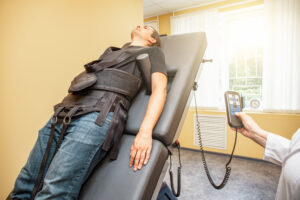
Needless to say, there are a lot of health risks involved in navigating the modern world (especially in the midst of this pandemic), and spine compression is one of them.
When your spine has been compressed for long periods of time, whether from a singular accident or a result of consistently poor lifestyle choices, you might feel constant debilitating pain in the back. As you might imagine, this is pain that can be difficult to ignore. Some might even say that the phrase “carrying the weight on your shoulders” takes on a more literal meaning in relation to spinal problems.
So how can you reverse spinal compression and relieve your discomfort? You decompress, of course. One of the recommended decompression therapies that you might want to consider: spinal traction.
What is spinal traction?

Spinal traction is a type of decompression therapy that can be traced back to more than 2000 years. It is said that the Greeks were among the first to practice this form of therapy, and it is still being used up to this day.
Spinal traction has one overarching goal: to relieve the pressure of compressed discs. This is done to effectively align your spine and make sure that your body is equipped to heal itself. It does so by stretching the muscles and joints in your back, soothing any discomfort that you might be feeling.
Medical practitioners recommend this for a multitude of spinal issues, such as treating sciatica, pinched nerves, herniated discs, etc.
What happens in a spinal traction therapy session?
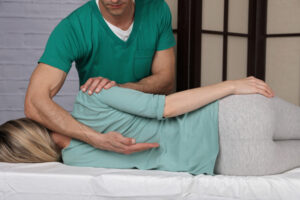
Depending on what your spine needs, spinal traction therapy can be done either manually or mechanically.
- Manual spinal traction
In a manual spinal traction session, your therapist will use their hands (banking on body strength) to align your spine. They will make use of manual force to release air pockets and manipulate your muscles and joints. This will help your body combat the strains of gravity and even the spaces between your vertebrae.
- Mechanical spinal traction
Mechanical spinal traction, on the other hand, makes use of tools and other implements to widen the spaces between each vertebra in your spine. Slings, pulleys, ropes are used to accomplish this task.
What are the pros of Spinal Traction Therapy?
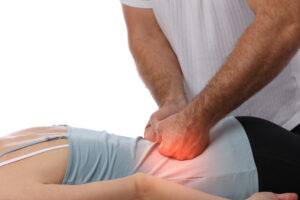
There are certain benefits to this form of decompression therapy. With the right practitioner, you’ll be able to enjoy a slew of benefits that can help you move and feel better.
- Spinal traction is a good non-surgical way to relieve pain
Spinal traction is a good alternative to more invasive spinal correction procedures. Your medical practitioner may, of course, recommend surgery or injection if your body needs it. However, if you want a more conservative solution that is easier on your pockets, spinal traction is an effective way of treating chronic or short-term back pain.
Nonsurgical decompression therapy through spinal traction may just be the right alternative treatment that your body needs.
- Spinal traction corrects problems in the spine
From sciatica to herniated discs to pinched nerves, our spine is susceptible to all sorts of problems. This can be especially prevalent to those who have poor posture and sit for many hours a day. While certainly alarming, the good news is that there are ways for you to ease the tension in your spine and realign them. Getting spinal traction therapy is one of these. It reverses spinal conditions caused by a compressed spine.
- Spinal traction provides consistent relief
Chronic back pain may have had you relying on pain relievers and the constant twisting and turning to crack your spine, all in the hopes of obtaining relief in your back. However, while certainly helpful in the short term, both solutions can cause further problems down the road.
Undergoing spinal traction therapy can help you manage back discomfort safely. Plenty of people report instant pain relief right from their first session, building up to even better results through consistent attendance in therapy.
What are the risks involved in Spinal Traction Therapy?
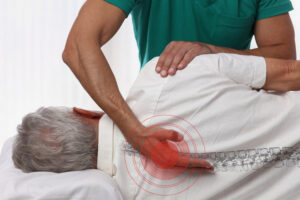
While reported to be effective, spinal traction therapy may not be the best course of action for everyone — some may have pains and medical history that require more aggressive treatments such as surgery or injections. But aside from this specific group of people, spinal traction can be a great solution for your spinal conditions.
It’s conservative, safe, and certainly cheaper compared to the alternative. It also does not pose long-term problems. Still, there are still certain risks linked to spinal traction that you need to be aware of:
- Spinal traction can sometimes cause pain
This form of therapy is, ultimately, recommended to alleviate pain and improve your body’s natural healing abilities. However, it is not one that is recommended to those with underlying problems such as certain types of cancer or osteoporosis. This is because spinal traction may cause further spinal damage that can be far more painful than the issues they had prior to therapy.
- Spinal traction is known to cause muscle spasms
Another side effect of spinal traction is muscle spasming. This is a fairly common risk, and most practitioners are trained and equipped to resolve this when it happens during therapy. Your practitioner should also be able to brief you on what needs to be done should muscle spasms happen outside of therapy sessions.
The bottom line on Spinal Traction Therapy

Many people find spinal traction an effective treatment for back problems. With a trusted practitioner, this form of therapy can help you relieve pain through manual or mechanical means. It also results in better spinal alignment, decompressed joints, and better body performance when done right.
As promising as these results may be, however, we still ask that you take extra precautions and secure a proper diagnosis for your problem prior to therapy. Your therapist may be able to assist or you can consult your physician for their go-ahead.
